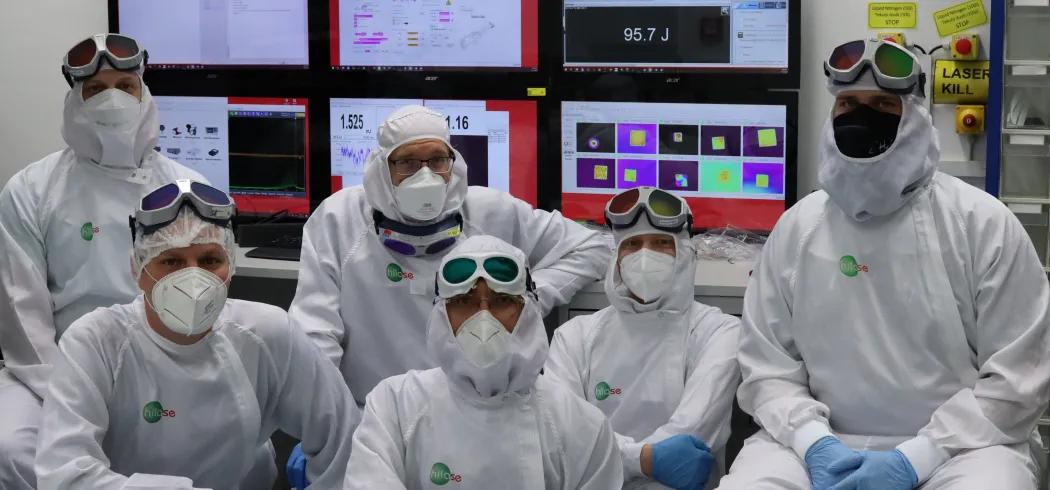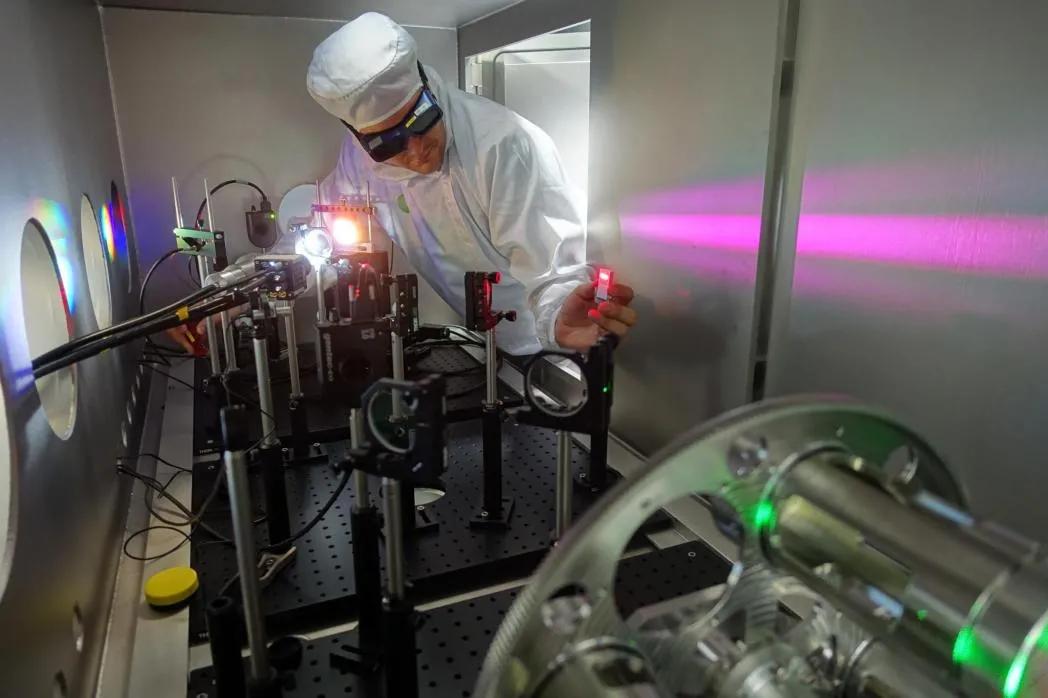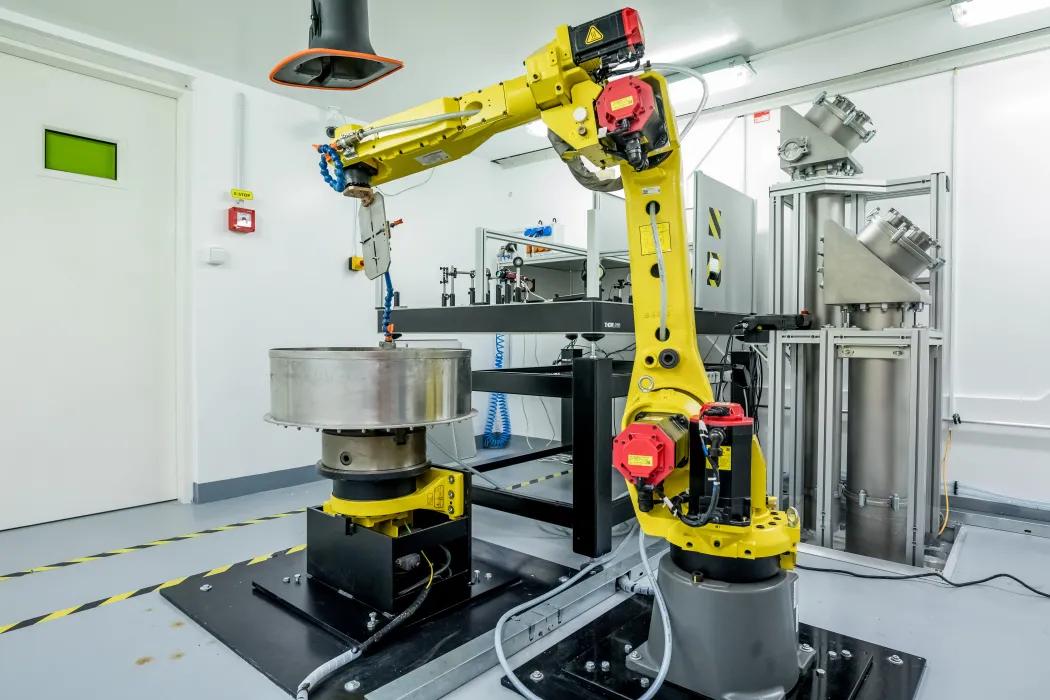In HiLASE Centre, a new generation of diode-pumped lasers with high average power and high repetition frequency has been developed for a long time. We talked to Jan Brajer, a leading expert from the HiLASE Centre, about colours of the laser as well as success in laser shock peening.
The diode pumping technology allows noticeably higher performance than classical pulse lasers. But what is the advantage of new lasers and what influence does the wavelength of the laser play in this?
The laser wavelength is a very important parameter because each material reacts with it differently; different lasers are suitable for metallic materials and for organic ones, for example. The current trend in machining is a shift away from long-wave lasers, which have been used historically, and instead of a CO2 laser with a wavelength of 10,600 nm, it is possible to use fibre lasers with a wavelength that is ten times shorter, for example 1064 nm. This applies not only to the processing of steel and iron-based alloys but also to non-ferrous metals, such as copper-based alloys. By way of illustration, if I take a laser suitable for cutting iron and use it for copper, which has a very low absorption, the absorption will be only two to three percent, but when applying a laser with a wavelength of around 500 nmse, the absorption will increase to 30-40 percent.
Lasers with different wavelengths are used today for welding batteries for electromobility as well as for classical welding in electric motors. Similarly, for example, the blue laser has started to be used as well. It serves to preheat the material, and the welding is then carried out by the classical infra-red laser, where the melt already absorbs the vast majority of the laser energy.
The use of different wavelengths of the laser in material processing can also be found in technologies such as 3D printing, which we are involved in as part of the Brain4Industry consortium. For steel-based printing, it is easy to use the ordinary infra-red laser, but for printing specialities, such as coolers made of copper, it is preferable to use the green laser.
In the HiLASE centre, do you have all laser colours?
Our lasers can generate radiation of different wavelengths, which can then be used according to the needs of the application. We have lasers emitting rays from infra-red through green and blue to ultraviolet. We definitely do not have all wavelengths, i.e. colours of the laser, and some that you ask about do not even exist, such as pink.
The centre achieves excellent results in innovating the laser shock peening technology. How do you harden materials?
Laser shock peening is hardening of the surface layer of materials to five or ten times the depth of conventional methods.
The hardening takes place thanks to the pressure created by the laser on the surface of a material and the subsequent propagation of the shock wave to a significantly greater depth. This procedure protects materials in such a way that a crack cannot spread at this depth, or only with a great difficulty. If a crack forms in a material hardened to only a small depth, it will fully break relatively fast. This does not apply to a material hardened by our method, and we thus make a crucial contribution to the safety of operation of the component or material.
At present in the centre, we are able to process components or parts with a size of one meter with a weight limit of 35 kilos. But of course, our ambition is to expand the possibilities so that we are able to arrive to and deal with a part the size of a turbine or a nuclear reactor, as it works for example in America. They have trucks there equipped with lasers similar to ours and in this way for example, containers for nuclear waste can be processed.
Do you help nuclear power plants with your expertise?
In cooperation with ČEZ, a. s. and Centrum výzkumu Řež s.r.o. we are developing a methodology for processing welded joints on the secondary circuit of the Temelín nuclear power plant. These are with different phase compositions, which are then thoroughly inspected by non-destructive methods. Thanks to our processing, these welded joints can then have a higher resistance and as a result contribute to increasing the safety and reliability of the entire system.
You also use the method of shock peening for metal implants…
Together with hip joint manufacturers, we have been involved in solving their potential life extension.
Normally, implants last 20 to 25 years, which may not be ideal for younger patients. The disadvantage of artificial joints can be their weight, but also the lack of elasticity. While the bone has the 2-25 GPa flexibility module, the titanium used has the 115 GPa elasticity. This problem can be solved with 3D printing technology, where a more pliable structure can be printed, which is closer in properties to bone tissue. In combination with 3D printing, laser shock peening technology helps us solve critical areas where we expect an implant to rupture, and we hope to extend its life in the number of cycles to its double.
Are you planning further transfers of this expertise to medicine?
As part of other technologies being developed, such as surface functionalization, we have submitted a project together with the BIOCEV centre, the result of which should be a reduction in the occurrence of biofilms on materials. We specially focus on plastic surfaces that are used in medicine. We expect relatively groundbreaking solutions, where using the laser we create grooving on the surface of the plastic with the size of hundreds of nanometers, i.e. smaller than the bacteria. We started working on a project with the Technical University in Liberec, where they made a mould for injection of plastics for us, into which we created the mentioned textures. The evidence shows that on the surface designed by us e.g. staphylococcus aureus cannot keep well and does not multiply. The number of bacteria on this surface has decreased compared to the standard to just 0.3 per cent; such a structure could then be applied to the surface of the phone or the keyboard of the computer.
The HiLASE Centre (abbreviation for High Average Power Pulsed LASErs) is a scientific research centre of the Institute of Physics of the Czech Academy of Sciences. The main objective of the research is to develop new laser technologies – diode pumped solid state laser systems (DPSSLs) with high energy in the pulse and at the same time high repetition rate. The centre also tests the resistance of optical materials and conducts research on the hardening of the material surface by shock wave, precise cutting, drilling, welding, micromachining and surface cleaning.


